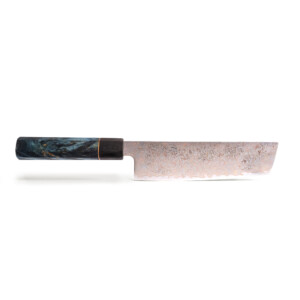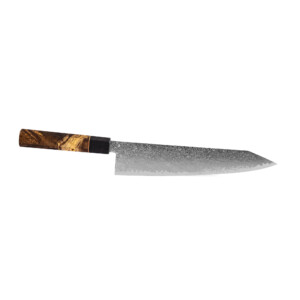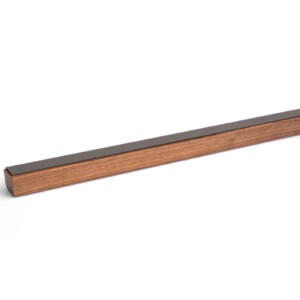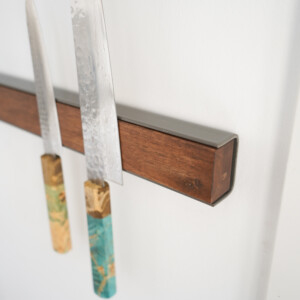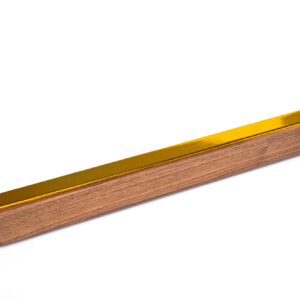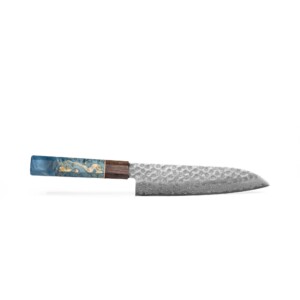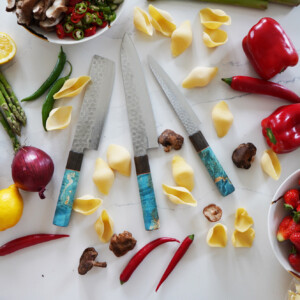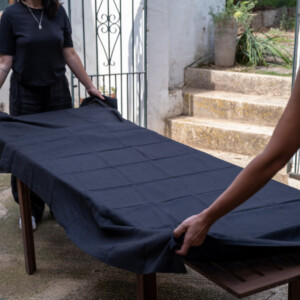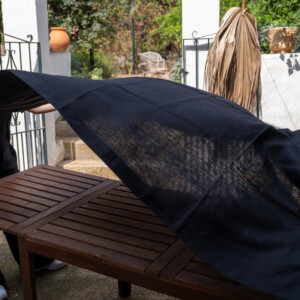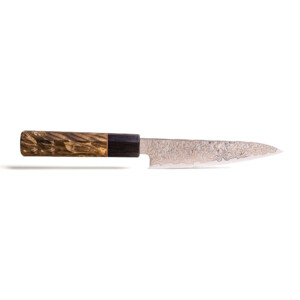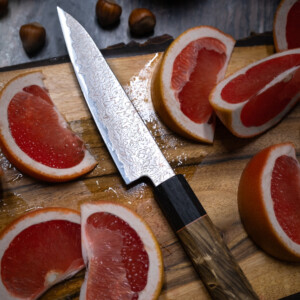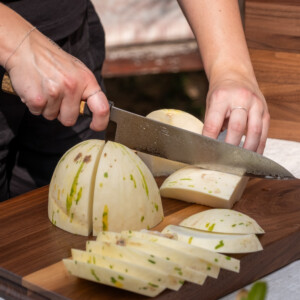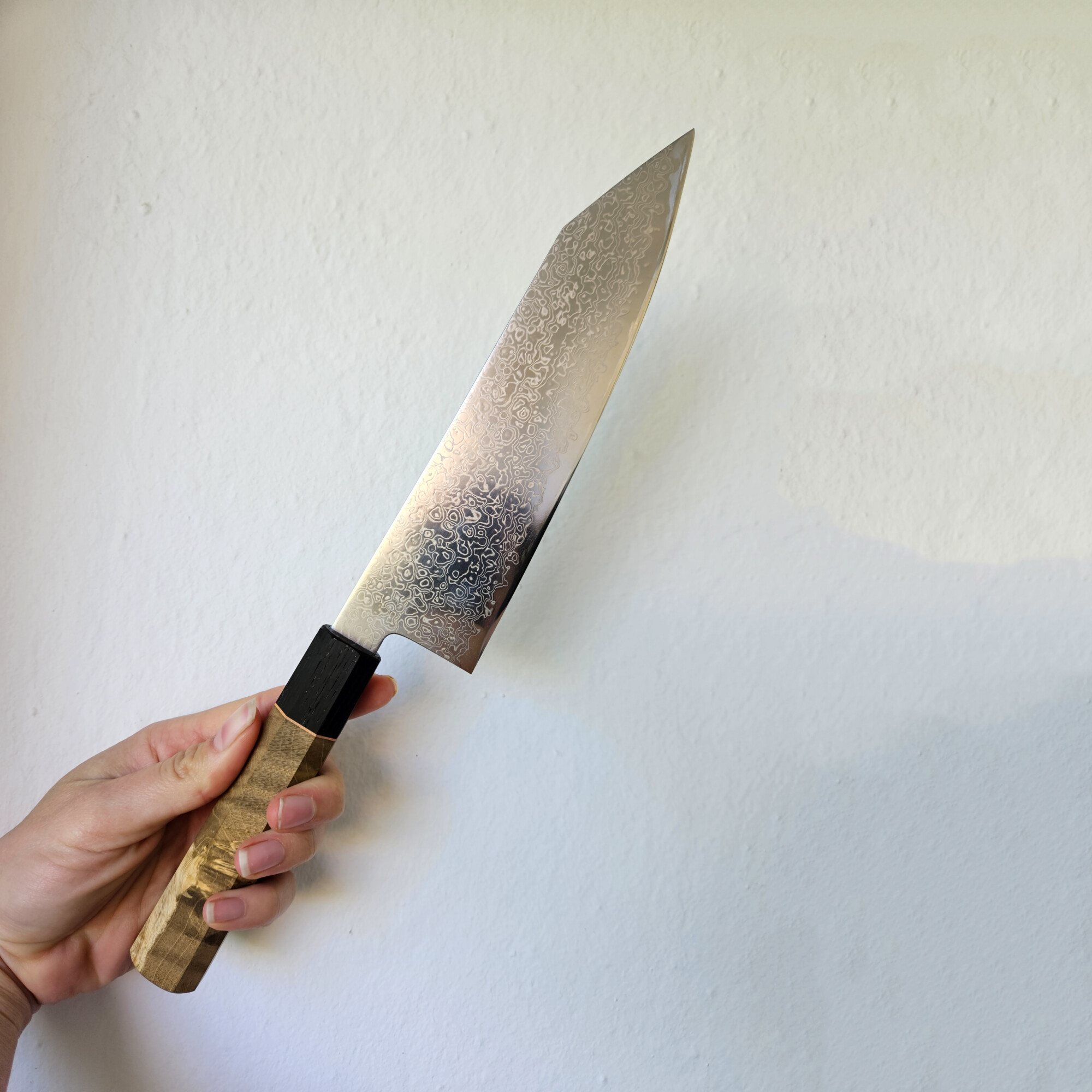The world of Japanese kitchen knives is a captivating realm where centuries-old traditions intersect with modern culinary innovation. As you embark on this journey, one of the first decisions you’ll face is whether to invest in an individual knife or a complete set. This choice can seem daunting, especially for those new to the intricacies of Japanese blade craftsmanship.
In this comprehensive guide, we’ll explore the pros and cons of both options, delving into the nuances of individual knives like the gyuto, santoku, bunka, and kiritsuke chef’s knives, as well as the convenience and versatility offered by knife sets. By the end, you’ll have a deeper understanding of which path aligns best with your culinary needs, skill level, and personal preferences.
The Art of the Individual Knife
Japanese knife makers are renowned for their dedication to specialisation, with each blade design serving a distinct purpose in the kitchen. When opting for an individual knife, you’re not just acquiring a cutting tool – you’re investing in a piece of craftsmanship tailored to specific culinary tasks.
1. The Gyuto: A Versatile Workhorse
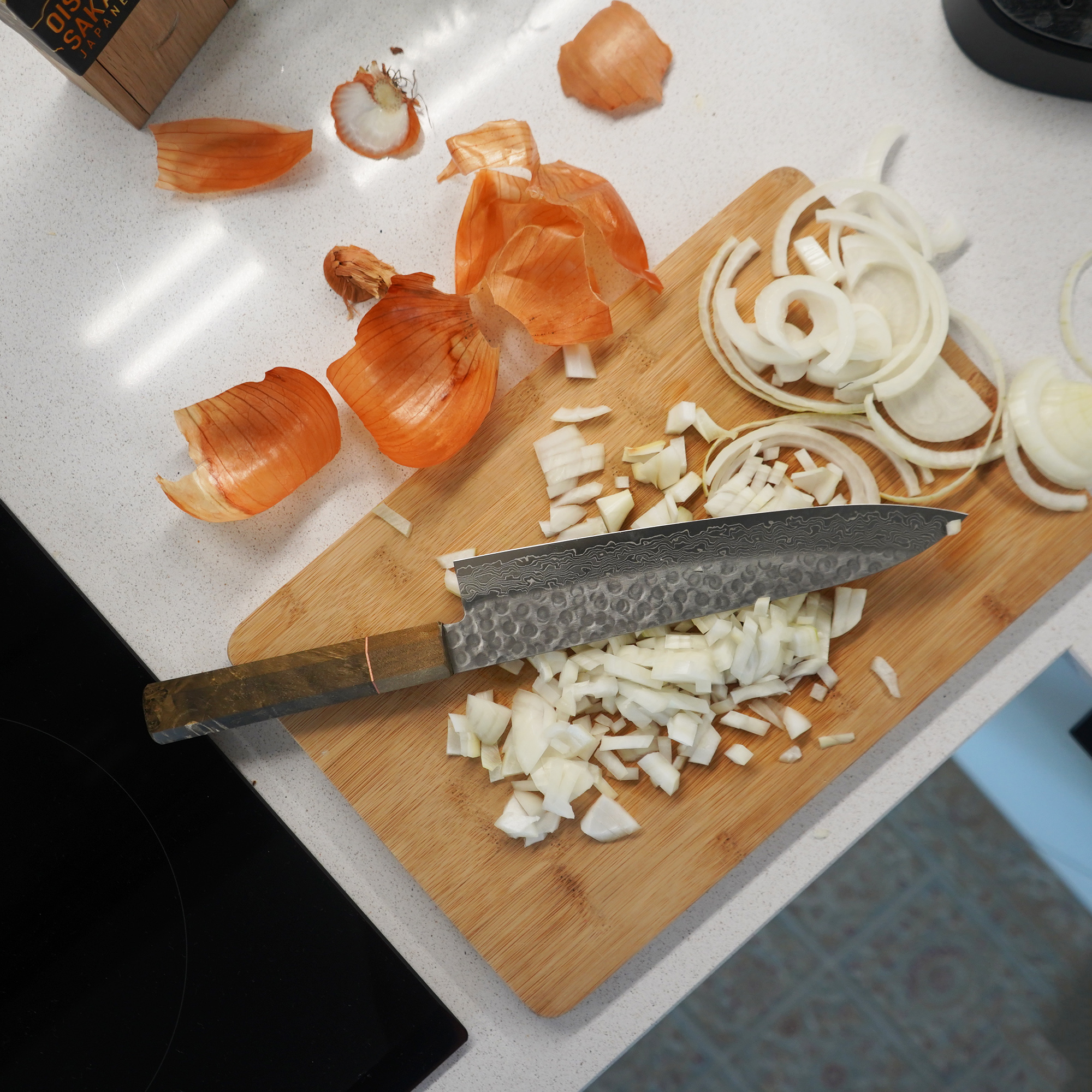
The gyuto, often referred to as the Japanese chef’s knife, is a versatile all-rounder that excels at a wide range of cutting tasks. With its curved blade and pointed tip, the gyuto seamlessly transitions from slicing and dicing vegetables to breaking down proteins with precision and control.
Gyuto knives come in various blade lengths, typically ranging from 180mm (7 inches) to 300mm (12 inches), allowing you to choose the size that best suits your hand size and cutting needs. Whether you’re a home cook or a professional chef, the gyuto is a reliable companion in any kitchen.
2. The Santoku: A Minimalist Masterpiece

The santoku, translating to “three virtues,” is a sleek and minimalist Japanese knife that embodies the principles of precision, utility, and balance. With its characteristic straight edge and sheepsfoot blade shape, the santoku excels at precise slicing, dicing, and chopping tasks.
Typically ranging from 165mm (6.5 inches) to 180mm (7 inches) in length, the santoku’s compact design makes it a popular choice for those with smaller hands or limited kitchen space. Its versatility and ease of use make it a favorite among home cooks and culinary enthusiasts alike.
3. The Bunka: A Hybrid Powerhouse
The bunka is a fascinating hybrid design that combines elements of the gyuto and the santoku, creating a unique and versatile knife. With a straight edge like the santoku and a slightly curved belly like the gyuto, the bunka offers the best of both worlds.
This multi-purpose blade excels at a wide range of tasks, from slicing and dicing to the delicate work of peeling and trimming. The bunka’s compact size, typically ranging from 165mm (6.5 inches) to 180mm (7 inches), makes it a practical choice for those with limited counter space or those seeking a knife that can handle various cutting tasks with ease.
4. The Kiritsuke: A Distinctive Chef’s Knife
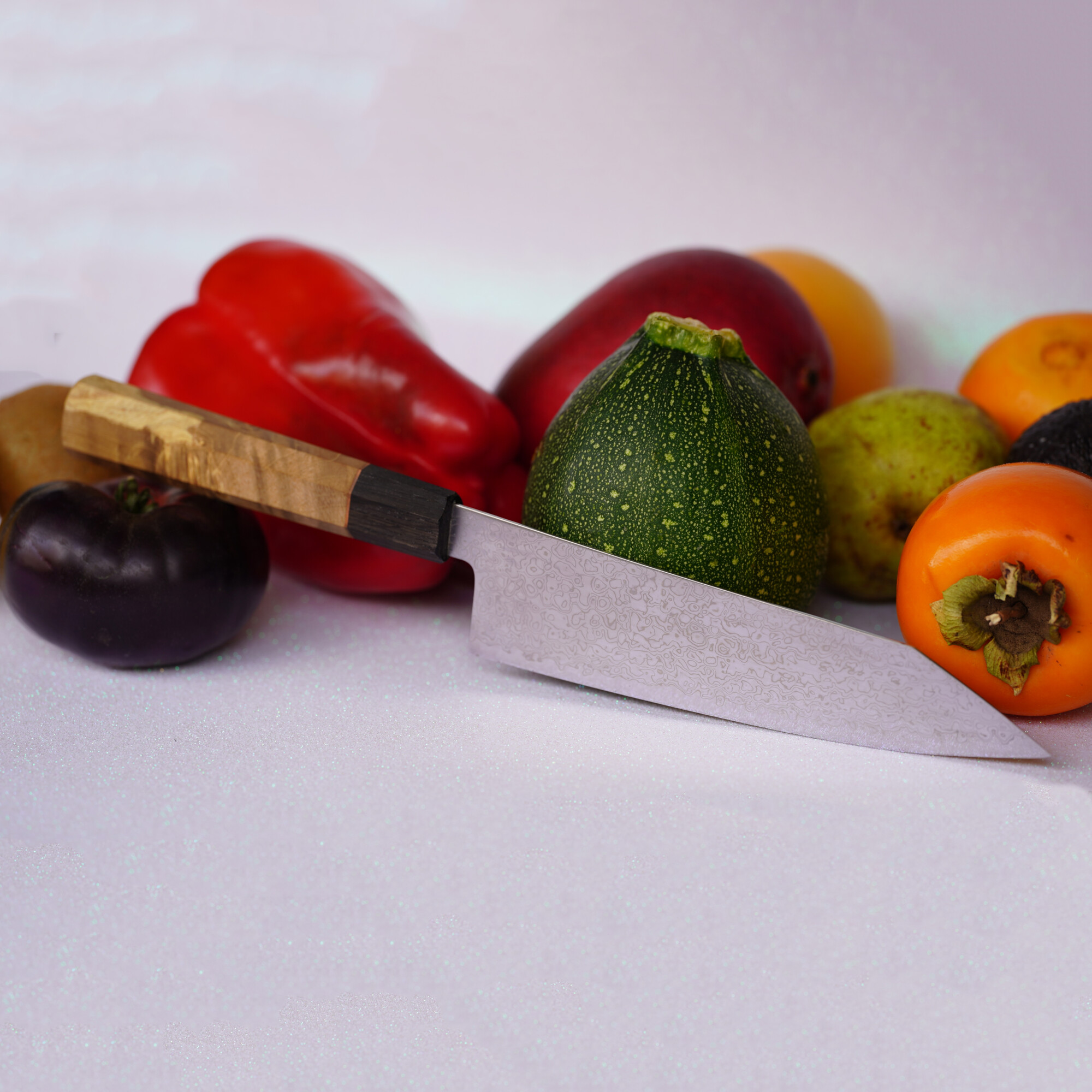
The kiritsuke is a distinctive and specialised Japanese chef’s knife that stands out with its unique blade shape. Featuring a flat profile and a pointed tip, the kiritsuke is prized for its exceptional slicing and chopping capabilities.
This blade excels at tasks such as breaking down large cuts of meat and poultry, as well as precision vegetable work. The kiritsuke’s blade lengths typically range from 210mm (8 inches) to 300mm (12 inches), making it a popular choice for professional chefs and those who prefer a larger, more substantial chef’s knife.
The Allure of Knife Sets
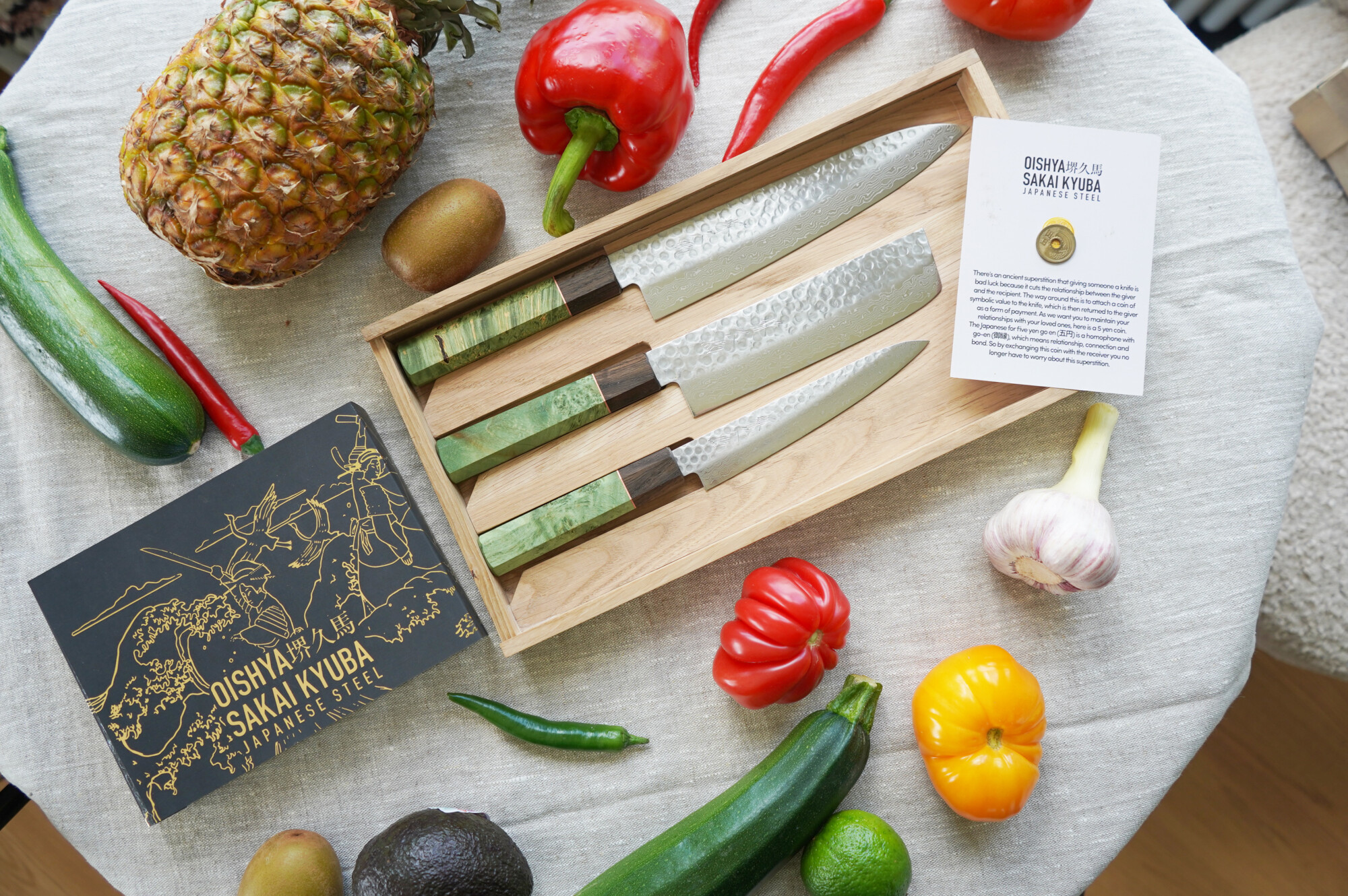
While individual knives offer specialisation and precision, knife sets provide a comprehensive solution for those seeking versatility and convenience. Japanese knife sets often include a selection of blades designed to tackle a wide range of culinary tasks, from the workhorse chef’s knife to specialized options like the nakiri (vegetable cleaver) and petty (utility) knives.
1. Versatility and Convenience
One of the primary advantages of investing in a Japanese knife set is the versatility it offers. With a range of blades at your disposal, you’ll be equipped to handle any culinary challenge, from intricate garnishing to breaking down larger cuts of meat or poultry.
Sets also offer convenience, as you’ll have a cohesive collection of knives designed to work in harmony, often crafted by the same maker and featuring complementary handles and materials. This eliminates the need to mix and match individual knives from different manufacturers, ensuring a consistent look and feel throughout your knife collection.
2. Specialised Options
Japanese knife sets typically include specialised blades tailored for specific tasks, such as the nakiri (vegetable cleaver) and the petty (utility knife). The nakiri, with its thin, rectangular blade and straight edge, is a powerhouse for precision vegetable cutting and slicing.
The petty, on the other hand, is a versatile utility knife that excels at tasks like trimming, peeling, and detailed work. By having these specialized options at your fingertips, you’ll be able to tackle a wide range of culinary tasks with efficiency and precision.
3. Cost-Effectiveness
While high-quality Japanese knives can be a significant investment, purchasing a set can often be more cost-effective than acquiring individual knives separately. Many reputable manufacturers offer bundled sets at a discounted price, allowing you to build a comprehensive collection of blades while maximizing your budget.
Additionally, knife sets often come with complementary storage solutions, such as a knife block or roll, further enhancing their value and ensuring your investment is well-protected.
Factors to Consider: Individual Knives vs Sets
As with any significant purchase, choosing between an individual knife or a set requires careful consideration of various factors. Here are some key points to keep in mind as you navigate this decision:
1. Culinary Needs and Preferences
Consider your culinary needs and preferences when deciding between an individual knife or a set. If you have a specific cutting task in mind, such as precision vegetable work, breaking down large cuts of meat, or intricate slicing and chopping, an individual knife tailored for that purpose may be the way to go.
However, if you’re a well-rounded home cook or a professional chef who tackles a diverse range of culinary tasks, the versatility of a knife set may better suit your needs.
2. Skill Level and Experience
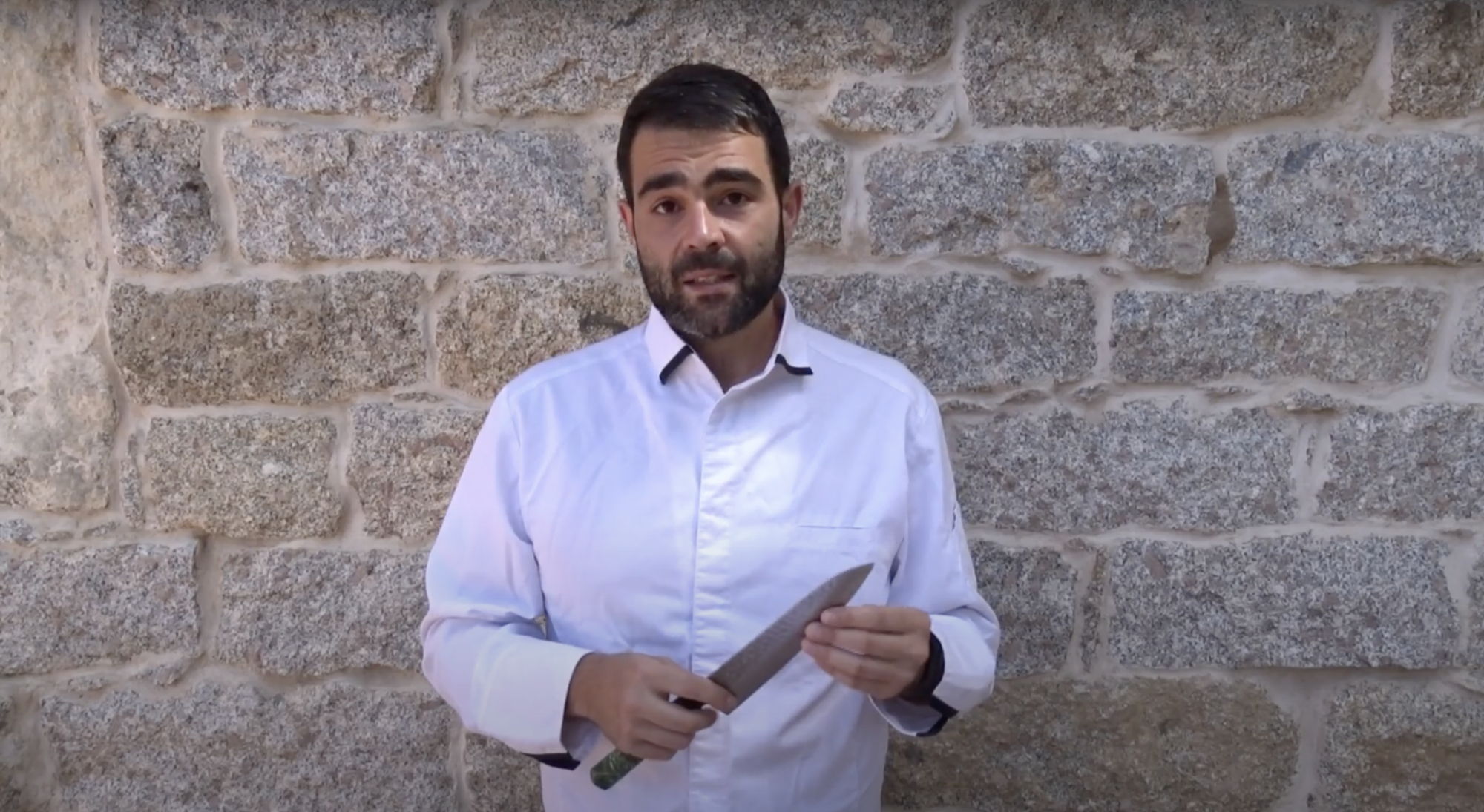
Your skill level and experience with Japanese knives should also factor into your decision. If you’re a beginner or new to the world of Japanese blades, starting with an individual knife like a gyuto, santoku, bunka, or kiritsuke can be a great way to develop your skills and appreciate the nuances of Japanese craftsmanship.
As you gain experience and confidence, you can then consider expanding your collection with additional individual knives or investing in a comprehensive set.
3. Kitchen Space and Storage
The amount of available kitchen space and storage can also influence your choice. If you have limited countertop or drawer space, an individual knife or a compact set may be more practical. Conversely, if you have ample storage solutions, such as a knife block or magnetic strip, a larger set can be a viable option.
4. Budget Considerations
Japanese knives are renowned for their quality and craftsmanship, which often comes with a premium price tag. While individual knives offer a more targeted investment, knife sets can provide better value for money if you’re looking to build a comprehensive collection on a budget. It’s essential to establish a realistic budget and factor in the long-term costs, such as sharpening and maintenance, to ensure your investment remains a worthwhile one.
5. Aesthetic Preferences
Although functionality should be the primary consideration, the aesthetic appeal of your knives should not be overlooked. Japanese blades are not only functional tools but also works of art, with each maker showcasing their unique craftsmanship and design sensibilities.
If the visual appeal and cohesiveness of your knife collection are important to you, a set may provide a more harmonious and visually appealing option. Alternatively, if you prefer a curated collection of individual knives from various makers, that path may better align with your aesthetic preferences.
Ultimately, it’s your choice
Whichever path you choose – an individual knife or a comprehensive set – the journey into the world of Japanese knives is one of discovery, appreciation, and culinary excellence. As you wield these finely crafted blades, you’ll develop a deeper understanding of the rich cultural heritage and unwavering pursuit of perfection that underpins Japanese bladesmithing.
Remember, the decision between an individual knife or a set is not a one-time choice; it’s a starting point on a lifelong journey of culinary exploration and personal growth. As your skills and preferences evolve, so too may your knife collection, with each addition representing a milestone in your culinary journey.
Embrace the challenges, celebrate the successes, and savor the artistry that comes with owning and mastering these exceptional culinary tools. Whether you opt for the specialized precision of an individual gyuto, santoku, bunka, or kiritsuke, or the versatility of a comprehensive set, the world of Japanese knives promises an unforgettable culinary adventure.
So, sharpen your blades, hone your skills, and let the journey begin. The path you choose is yours to forge, and the culinary possibilities are endless.










